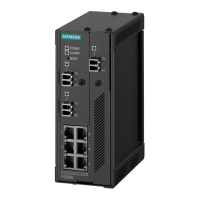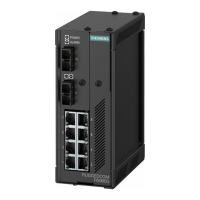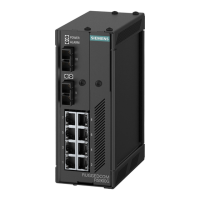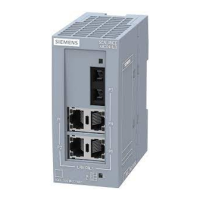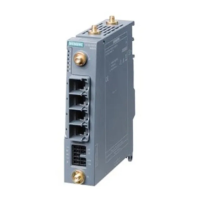RUGGEDCOM NETCONF
Reference Guide
Chapter 5
Changing Configuration Data
Locking Data Stores 43
This section describes how to lock the datastores, edit and delete data, validate the configuration, commit the
changes, and lock the datastores.
For instructions on how to initiate a NETCONF session, refer to Section3.2, “Connecting to the NETCONF Service”.
For instructions on how to close a NETCONF session, refer to Section3.4, “Closing the Session”.
CONTENTS
• Section5.2.1, “Locking Data Stores”
• Section5.2.2, “Copying Data”
• Section5.2.3, “Replacing Data”
• Section5.2.4, “Deleting Data”
• Section5.2.5, “Validating Changes”
• Section5.2.6, “Committing Changes”
Section5.2.1
Locking Data Stores
To lock the candidate and running datastores, do the following:
1. Issue an <rpc> request to lock the running configuration:
<rpc xmlns="urn:ietf:params:xml:ns:netconf:base:1.0" message-id="1010">
<lock>
<target>
<running/>
</target>
</lock>
</rpc>
]]>]]>
• All commands must be enclosed within <rpc> tags. The message-id attribute is not required but is
recommended. The message-id attribute is returned in the device response, allowing you to match
responses with requests.
• The <lock> element indicates that this request is to lock a configuration.
• The <target> element specifies the configuration to lock. In this <rpc>, the lock target is the
<running> configuration.
• The ]]>]]> string indicates the end of the NETCONF message. Each NETCONF message must end with
]]>]]>
The device responds with the following:
<?xml version="1.0" encoding="UTF-8"?>
<rpc-reply xmlns="urn:ietf:params:xml:ns:netconf:base:1.0" message-id="1010">
<ok/>
</rpc-reply>]]>]]>
The running configuration is now locked
2. Issue an <rpc> request to lock the candidate configuration:
<rpc xmlns="urn:ietf:params:xml:ns:netconf:base:1.0" message-id="1011">
<lock>
<target>
<candidate/>
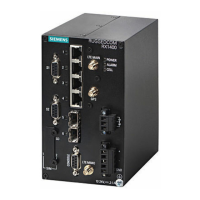
